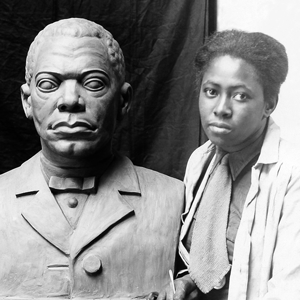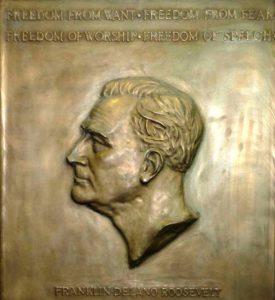
Selma Burke: One of the Most Notable Sculptors of the 20th Century

The Franklin Roosevelt plaque in the Recorder of Deeds Building in Washington
(source: Flickr, Creative Commons Attribution 2.0 Generic license)
Selma Burke (1900-1995) is credited with being the artist behind US President Franklin Roosevelt’s image on the American ten-cent coin. One of the most notable sculptors of the 20th century, she was also a painter and art teacher.
Burke first started sculpting small objects and animals with white clay from a riverbed near her home in North Carolina when she was a small child. “One day, I was mixing the clay and I saw the imprint of my hands. I found that I could make something… something that I alone had created,” she told the New York Post in 1945.
Although her father encouraged her artistic inclination, her mother advised her to becoming a nurse. Following her nursing school studies and a short marriage that ended with her husband’s early death, in the 1920s Burke moved to New York City to work as the private nurse of Otis Elevator heiress Amelia Waring. Waring exposed Burke to art and culture sites and events in New York. There Burke socialized with the artists and writers associated with the Harlem Renaissance, an intellectual and cultural revival of African American music, dance, art, fashion, literature, theater, politics and scholarship in the Manhattan neighborhood during the 1920s and 1930s. Following Waring’s death in 1935, Burke devote all her time to sculpture. In 1938, she studied with French artists Aristide Maillol and Henri Matisse in Paris after earning fellowships.
In 1940, Burke founded the Selma Burke School of Sculpture. She received a scholarship to attend Columbia University, where she earned a Master of Fine Arts degree and held her first exhibit in a New York gallery.
According to the National Women’s History Museum, Burke “won a nationwide contest for the commission of a bronze relief portrait of President Franklin Roosevelt. Burke felt that photographs of Roosevelt were inadequate for her needs and requested a sitting with the President so she could draw him. Roosevelt agreed and Burke sketched Roosevelt over two days in February 1944.” Roosevelt died in April 1945. His successor, President Harry S. Truman, unveiled Burke’s relief portrait at the Recorder of Deeds Building in Washington, D.C. on September 24, 1945.
Burke sculpted figures and busts of important African Americans, such as musician Duke Ellington, educator Mary McLeod Bethune, reformer Booker T. Washington, and civil-rights activist A. Philip Randolph. Her well-known pieces include Torso (1937), Temptation (1938), (Untitled) Woman and Child (1950), and Together (1975), among others.
In 1968 she opened the Selma Burke Art Center in Pittsburgh, which she ran until 1981. There she introduced art and sculpture to inner-city youth. In 1979, President Jimmy Carter presented Burke with the Women’s Caucus for Art Lifetime Achievement award.
Burke finished her final sculpture in 1980, an eight-foot bronze statue of Martin Luther King Jr. now located in Marshall Park in Charlotte, North Carolina. Her sculptures appear in numerous private and public collections and can be seen at Winston-Salem State University, at the Smithsonian American Art Museum, and at the Mooresville, North Carolina Public Library in her hometown.

